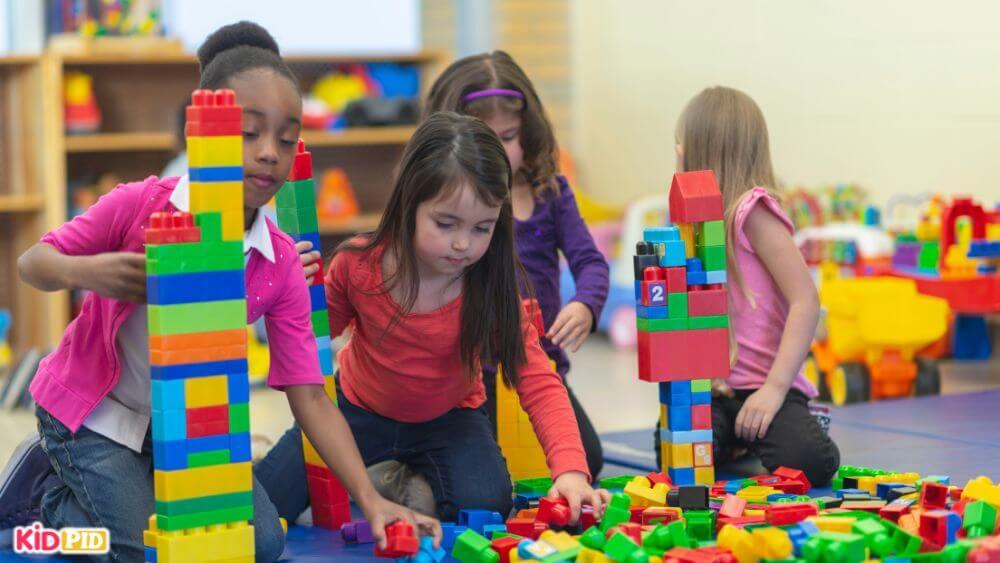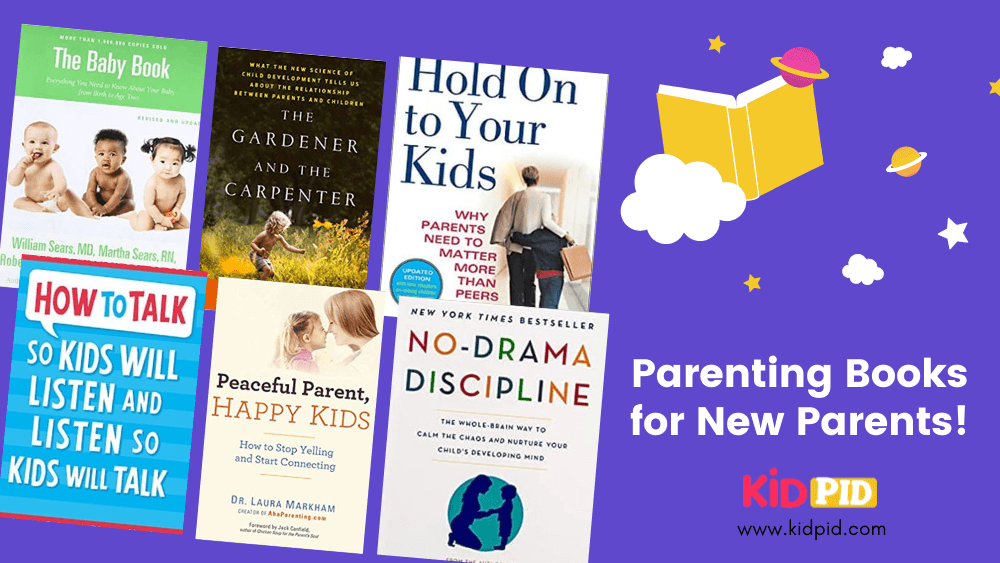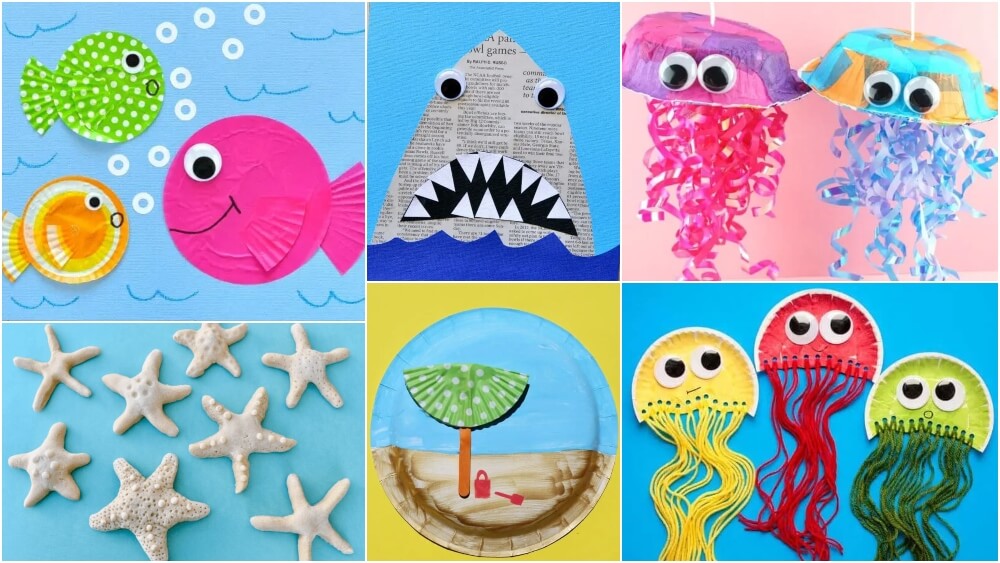What is Parallel Play? How it can be beneficial for your kids?

Toddlers who play simultaneously but not directly with one another are said to be engaging in parallel play. They might try to imitate or watch the other child’s actions throughout this exercise. Since they still lack social or awareness abilities, they attempt to model their behavior on those around them. Play like this may begin between the ages of eighteen months and two years.
Playing imitative and imaginary games is famous throughout the toddler years. Your youngster mirroring what a playmate is doing while without appearing to interact with him directly is one example of parallel play. For example, your child may opt to play with blocks if their playmate is doing so.
Even while it could feel strange to watch your youngster playing alone next to another kid rather than with them, nothing is necessarily wrong. Because it teaches your kid about connections and social interaction, parallel play is crucial to her growth. Additionally, he watches the kids around and attempts to imitate their actions. One of the main advantages of parallel play is that he can, in the long term, explore new concepts and pick up new words in this way. On the other hand, as your child gets older, you’ll notice that she plays with more friends and engages in more imaginative play.
Although the parallel play may appear self-centered, your child will learn significantly from it. Play is a highly creative activity that involves both the body and the intellect. It doesn’t matter if toddlers merely repeat an activity or try something new they learned via parallel play—either way, it’s all part of learning and development. Remember that what seems easy to you could be difficult for small hands trying to refine movements. A youngster may have a complex creative element underlying a seemingly simple deed. Your toddler will listen to conversations between children or adults in the area while sitting and attending to their activity.
They may occasionally glance and see a toy or activity being referred to by a specific term. Later, they’ll surprise you with new words they’ve added to their vocabulary. Your child learns more than simply how a toy rolls, falls, or moves when pushed during parallel play. They also express their emotions using everything they can get their hands on, including toys, their hands, and even dirt and sticks. Individuals are generally based on what they encounter in real life, ranging from delight to terror to annoyance or just plain stupidity.
Watching them play, you may learn more about their developing personalities and how their young minds function. At this age, don’t expect your kids to play quietly without ever glancing at the toys of their peers.
When children learn to express themselves, their mental growth jumps significantly. Understanding the term and meaning of “my” is a crucial first step toward comprehending limits. Help kids realize that toys brought to a communal space may be securely shared without the worry of being taken away. Permit them to declare “mine” to defend what is theirs. Due to their limited understanding of sharing, toddlers in a similar play stage are naturally protective of their possessions. If things get out of hand, step in, but resist the urge to criticize or degrade your child if he has problems sharing.
In contrast to being reprimanded, he will learn more from watching you assist him in modeling good sharing behavior. (However, it can take a while.) Playing need not be solitary. Your child is in the appropriate place, at the center of the larger universe; they have yet to comprehend their little world. Your youngster can learn about social interaction by seeing how other kids interact.
When they are developmentally prepared for group play, these observations will be put to good use. Interactions may be constructive (such as kids being kind to one another) or destructive (one child pushes another or grabs a toy). Both have something to teach us. Toddlers are often very social beings who rely on engaging first and foremost with their caretakers before moving on to other people as they learn more about the world around them.
Your child’s play sessions will start to change as he approaches preschool age into interactions that entail coming up with fresh concepts or games, taking turns, sharing, and displaying empathy for others. By the time your toddler is four or five, he will also begin to make his first genuine friendships and acquire preferences for the playmates he enjoys.
Parallel play is your child’s initial step in learning to engage with his friends, even if it may not appear that any socialization is taking place. Plan those play dates because all you have to do is offer him opportunities to interact and explore with kids his age. It’s also excellent for kids to participate in nearby activities like music or dance lessons without necessarily interacting with each other. Plan playdates with kids that are similar to you or just a little older.
To profit from playdates, remember that they don’t necessarily need to be playing together. Playgrounds are a terrific place for them to interact with kids of different ages while allowing for parallel play. The brain is stimulated by music and dancing, which also aids in the development of gross motor skills, promotes self-expression, and instills confidence. Participate in a Parent & Child music lesson, or have a dance party while out with friends.
Remember that playing is considered to be art! Any particular artistic endeavor can be done concurrently. Playing with playdough, sand, or water is a beautiful way to engage in sensory exercises. I suggest investing in a sensory table if you have the room and resources.
Ensure you have enough supplies for two or more kids to avoid fights. We want to give our kids the best chance for success, but they might not be ready to share.
Here are some tips for supporting your toddler’s parallel play:
- Give your kid the chance to play with other kids.
- Limit these playmates initially to no more than two or three kids at a time.
- Make home playdates with kids of like ages.
- Enroll in a mommy-and-me class
- Keep a watch on things to prevent fights over toys and prevent arguments from starting over toys.
- Ensure the safety of the play area
- Children should never be left unsupervised.
Parallel play might be a great way for your youngster to learn the principles of social interaction.
- At first, it could seem a little strange that your child is playing alone rather than socializing with the other kids in the area. He will, however, gradually begin to observe and take up new abilities, languages, and other behavioral traits.
- Consider it one of the main advantages of parallel play since it promotes your child’s healthy growth.
- You can arrange playdates for your child with youngsters of a similar age to help with this goal. His social and emotional development may benefit from this as an excellent chance.






Responses